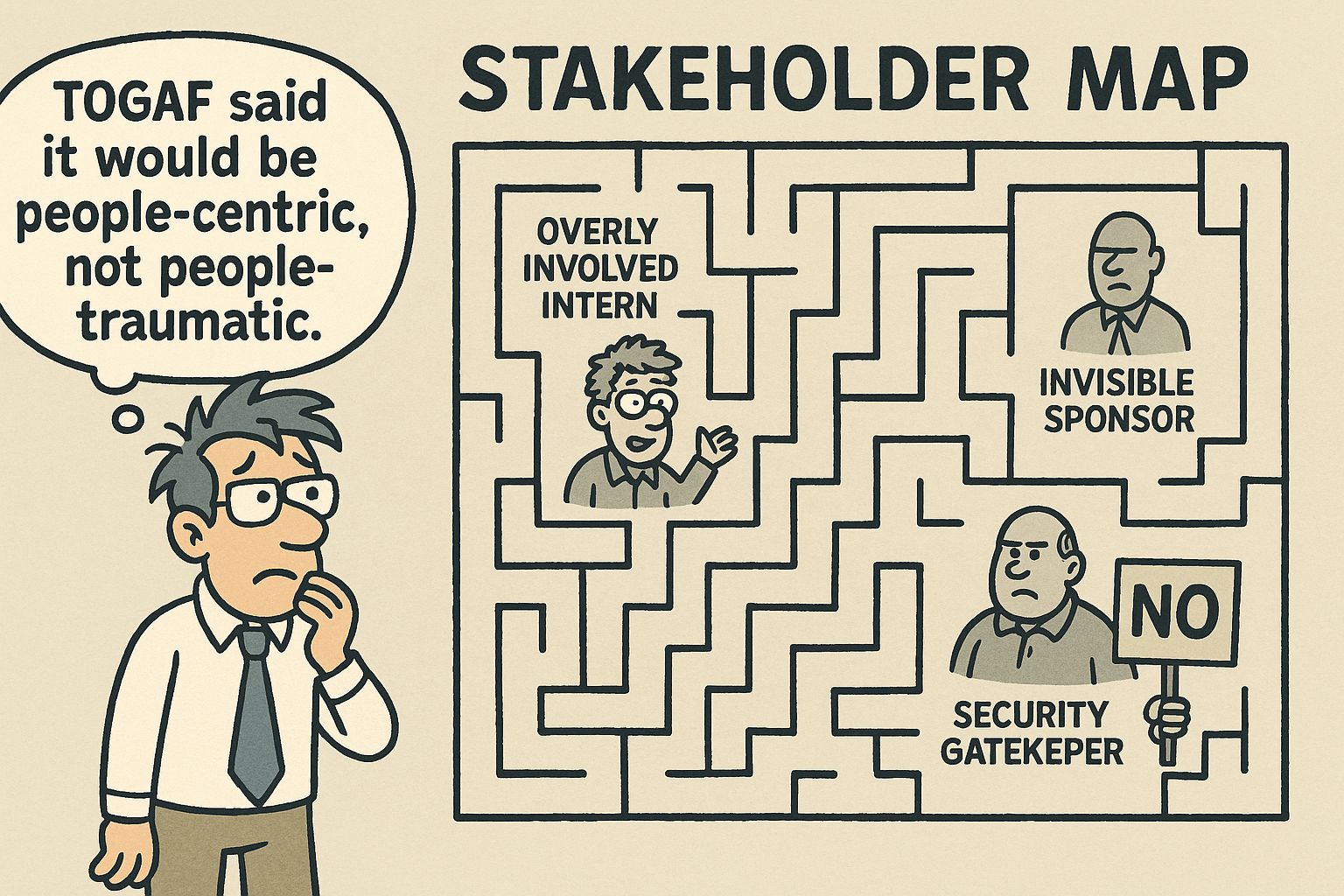- Enterprise Architecture: The Struggle is Real
- Posts
- Stakeholder Map Maze: Navigating TOGAF’s People-Centric Views
Stakeholder Map Maze: Navigating TOGAF’s People-Centric Views
Greetings, Architects of Anxious Alignment!
This week, we venture into the Stakeholder Map Maze — where every corridor leads to another “critical stakeholder” you somehow forgot to invite, and every meeting reveals someone new who “should have been consulted.”
The Main Story: Herding Humans with Frameworks
You’ve crafted the perfect architecture vision. It’s clean, compliant, and blessed by the gods of governance.
Then comes the kickoff, and suddenly everyone’s an architect:
Marketing wants “innovation.”
Finance wants “numbers.”
Security wants “no.”
Operations just wants to be left alone.
Your once-elegant stakeholder map now resembles a conspiracy corkboard: Post-its, red string, and more dotted lines than an airport evacuation plan. Every “influence” arrow feels like a trapdoor.
And of course the CEO walks in asking, “Why aren’t we on this map?”
TOGAF to the Rescue (With a Compass)
TOGAF’s Stakeholder Management technique reminds us that not all stakeholders are created equal — some must be kept satisfied, others closely managed, and a precious few quietly shielded from scope creep (apply donuts as required).
The Stakeholder Map Matrix (influence vs. interest) helps you prioritize attention — the scarcest resource after budget.
TOGAF’s Architecture Vision and Communications Plan tie it together so each persona hears what they care about: outcomes for business, risks for security, costs for finance, and “no 2 a.m. deployments” for ops.
Secret sauce: TOGAF doesn’t just map people; it maps power dynamics. The quiet analyst with data access can derail more than a loud VP with a calendar conflict.
Educational Twist: Escape the Maze
Map Early, Revise Often – Update per phase; stakeholders mutate faster than requirements.
Prioritize by Influence – Titles mislead; authority flows where approvals live.
One-Page Visuals – Four quadrants, crisp personas, zero spaghetti.
Tailored Comms – Translate architecture outcomes into each stakeholder’s KPI language.
Define “Not a Stakeholder” – Write down who is informed only to prevent drive-by design.
Humor in Diagrams

Reader Engagement
What’s your wildest influence plot twist? Drop a one-liner about the stakeholder who changed everything at the eleventh hour.
Next Week’s Tease
The Accidental Architecture Review Board — when your steering committee decides it’s also the design authority.